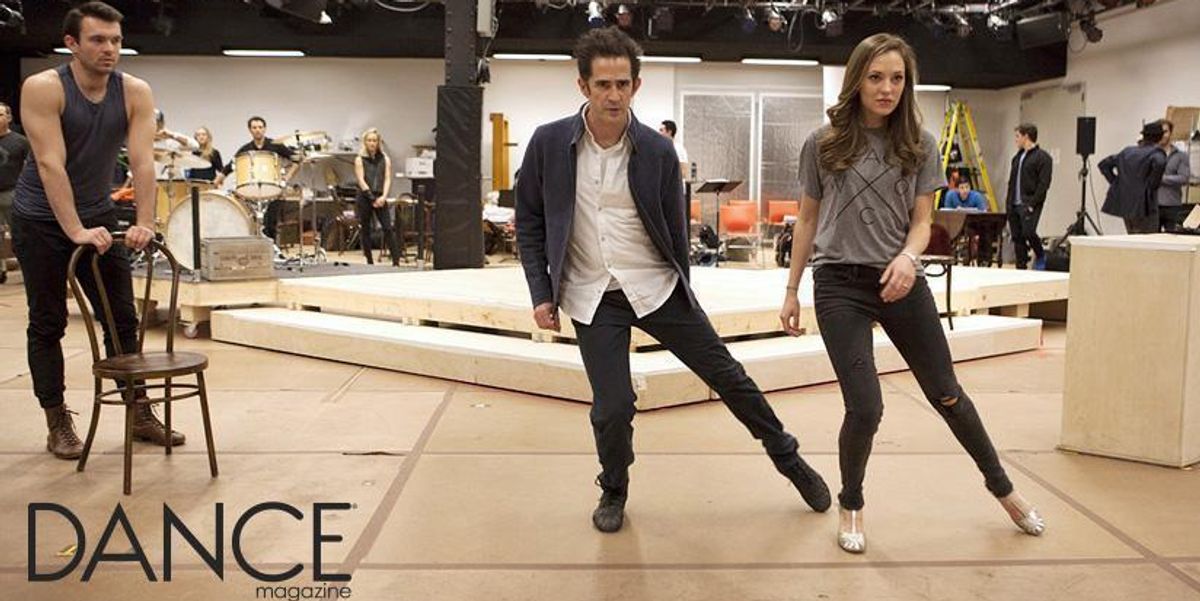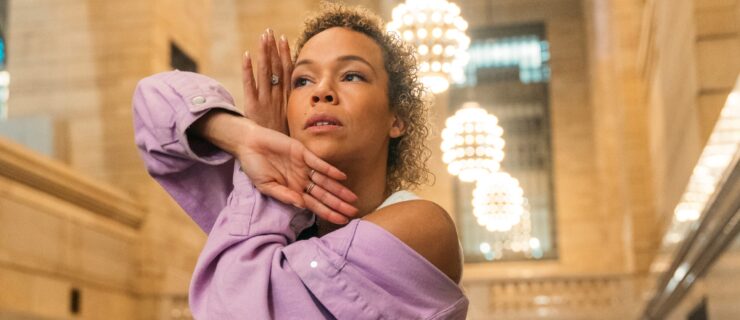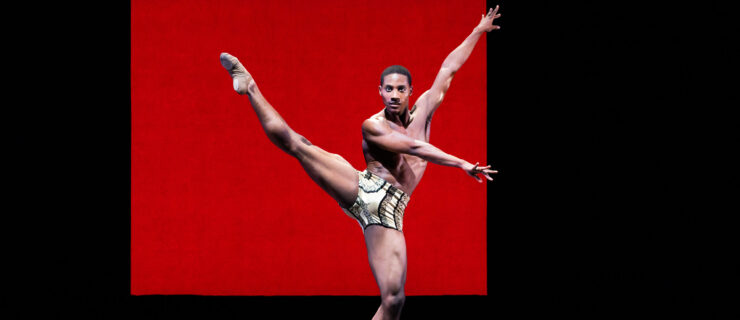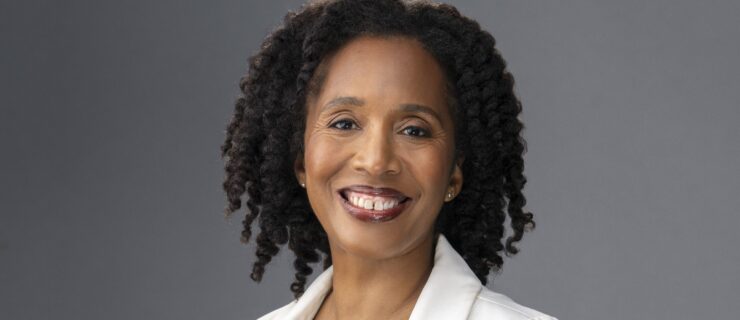Andy Blankenbuehler Brings His Choreographic Talents to Bandstand
It doesn’t look like your great-grandfather’s jitterbug. Yes, the year is 1945, and yes, the setting is a jazz club. But these swing dancers are in the new musical Bandstand, directed and choreographed by Andy Blankenbuehler. The number, “Nobody,” is a paean to determination—”You know who tells me, ‘Stop’? Nobody.”
The choreography begins as metaphor and then becomes literal as the band members, revved up by the song, perform it for the dancers at the club. It’s complicated and entirely fresh, avoiding familiar jitterbug tropes without ever abandoning the period feel.
Little wonder: Blankenbuehler, whose first director/choreographer outing was Bring It On: The Musical, says his influences included Judy Garland’s “Get Happy” and Michael Jackson’s “Smooth Criminal.” (“I’m imitating Michael Jackson imitating Fred Astaire.”)
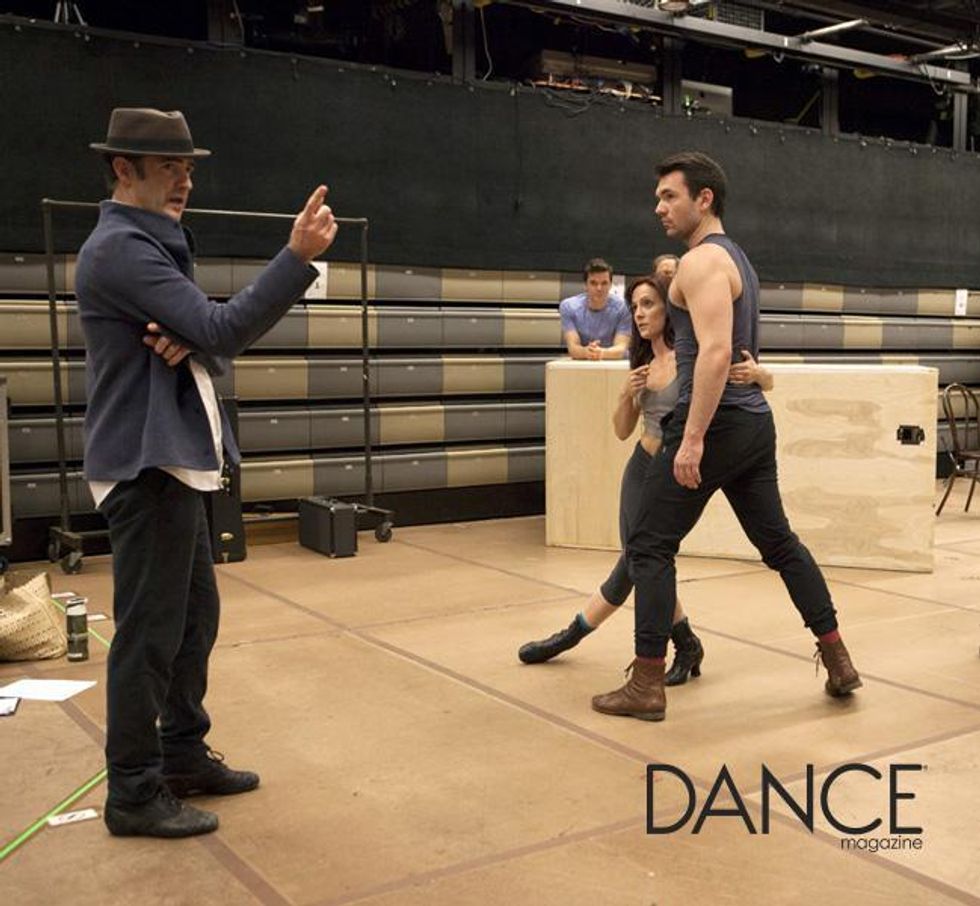
Photo by Rachel Papo
And when a painstaking perfectionist digresses, there’s always a reason. “The music is pushing from the late ’40s into the ’50s,” he explains, “so choreographically I’ve done the same thing.”
Because Blankenbuehler has worked with these dancers before, some when the musical opened in 2015 at New Jersey’s Paper Mill Playhouse, they understand his shorthand.
Urging them to be more “hieroglyphic,” or asking for “African knees,” he stops to adjust not only big stuff—the angle of a pelvis or the hike of a shoulder—but tiny details, like the tilt of a chin. And flying chairs, clothes, mike stands and musical instruments are being choreographed along with bodies. (No need to mention Blankenbuehler’s trademark hats.)

Photo by Rachel Papo
Those instruments are key—Bandstand centers on Donny (Corey Cott), a musician who returns from the fighting in Europe and starts a dance band with other war-damaged veterans and the widow (Laura Osnes) of one who never came back. The cast acts, sings and dances, of course, but those playing musicians are musicians.
There’s an orchestra in the pit, but when Donny and his band perform the songs, by the authors Richard Oberacker and Robert Taylor, they’re not just pretending.
“It is like no other show this season,” Blankenbuehler says. “It’s easy to dig into the characters and the subject matter and the fact that the musicians are playing live onstage. All that stuff makes the piece really individual.”
Blankenbuehler’s involvement began in 1976, well before his choreography Tonys for In the Heights and Hamilton. He was in first grade and met David Kreppel, Bandstand‘s vocal arranger. They played soccer, had sleepovers and shared a love of musical theater.
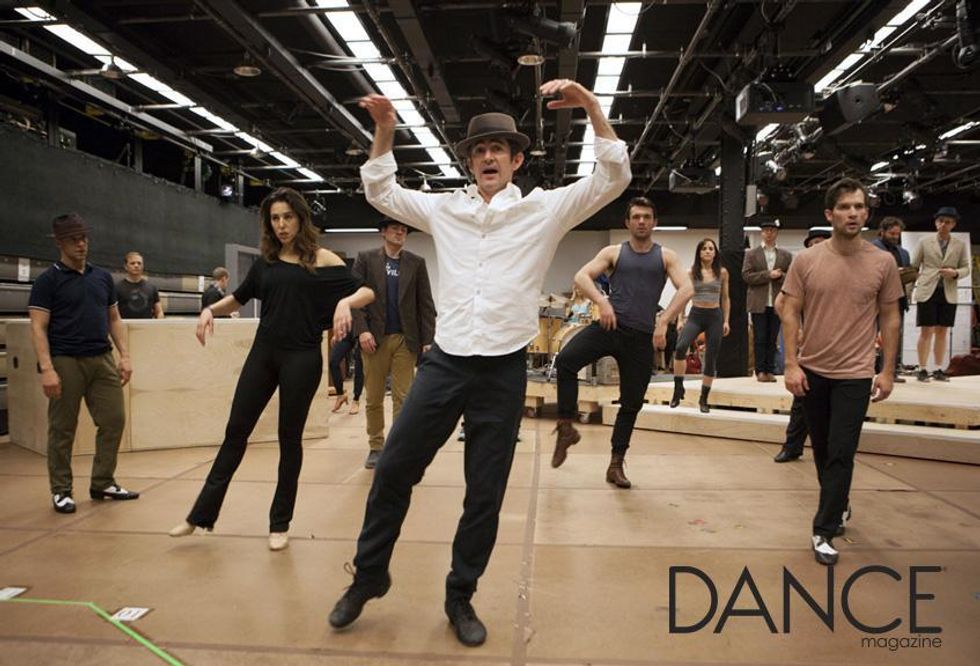
Photo by Rachel Papo
As high school juniors, they attended a theater camp at the University of Cincinnati, where they met Oberacker. “I was in touch with them for, like, 20 years,” Blankenbuehler says, “but we never worked together.” Then they called to say they’d just finished a draft of a show that really needed a director/choreographer. “They knew I had a passion for swing material that I hadn’t really gotten to tap into,” he says.
The show was developed through readings, a Lincoln Center workshop, then Paper Mill—in three and a half years, relatively fast. And only now, Blankenbuehler says, is he getting “Nobody” where he wants it. “I spent a lot of calories on work that went by the wayside,” he says. “And that can be a tiring process. But that’s how you find a show.”
When a second-act love song for Osnes was troubling him, he couldn’t figure out why. “So I staged it fully and turned it into a little bit of a dream ballet.” It was “a beautiful dance” that never felt right, he notes, until he moved the song into Act I and cut the dance.
“I want the material to move so much I often have to go through the exercise of choreographing it to understand it,” he says. He illustrates the point by recounting how he arrived at a three-count transition in Hamilton: He choreographed a 45-second version that helped him “realize what was and what was not important.”
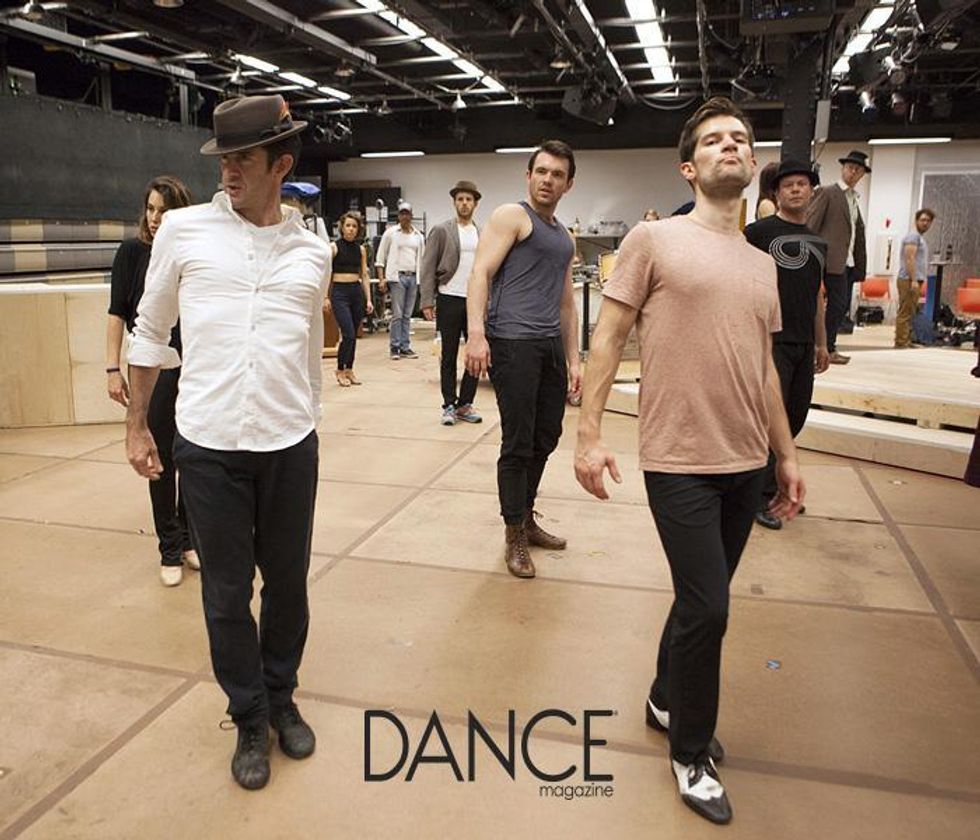
Photo by Rachel Papo
He sometimes feels he’s wasting hours of his life, he admits, “but I actually like asking myself hard questions in the dance studio.”
His original version of “Nobody” also set off his alarms, and the current one includes “lots of improvements,” he says. “When a moment doesn’t truly come from character, it’s inherently false. I know that I’m just making a showbiz moment. And I don’t want to just make a showbiz moment…I want it to come from the story.”
The Bandstand story is not just about veterans haunted by what they’ve experienced in war, he says. “Our show is about how people turn to their art both to pay the rent and to treat their souls.”
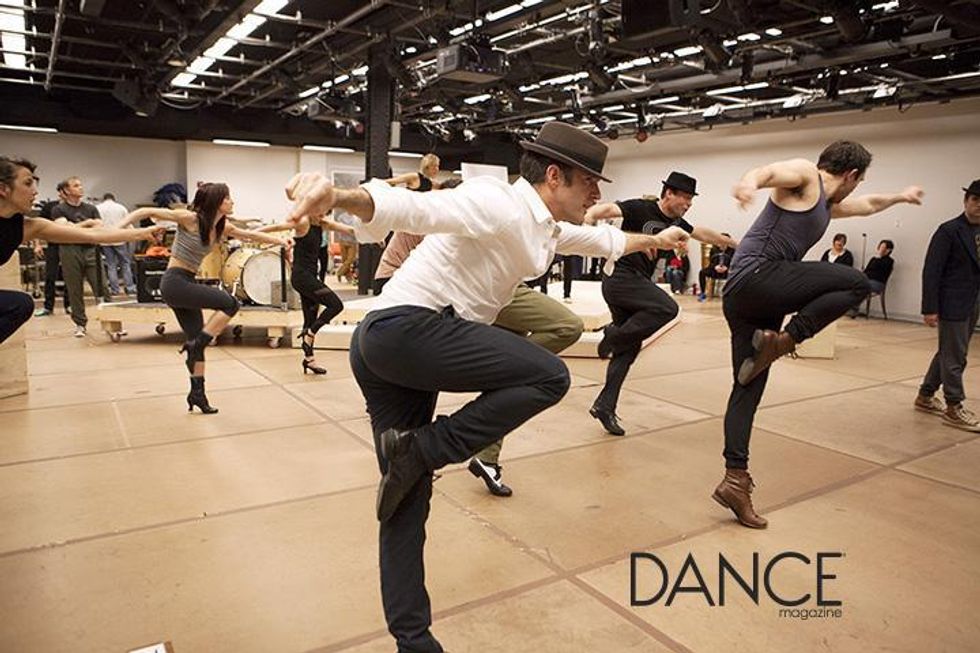
Photo by Rachel Papo
His own soul is doing well, thank you very much. “It feels like a good time for me,” he says. “I just turned 47, and I still feel great and I’m dancing hard. But it feels I can now really think about the depth of my work.”
